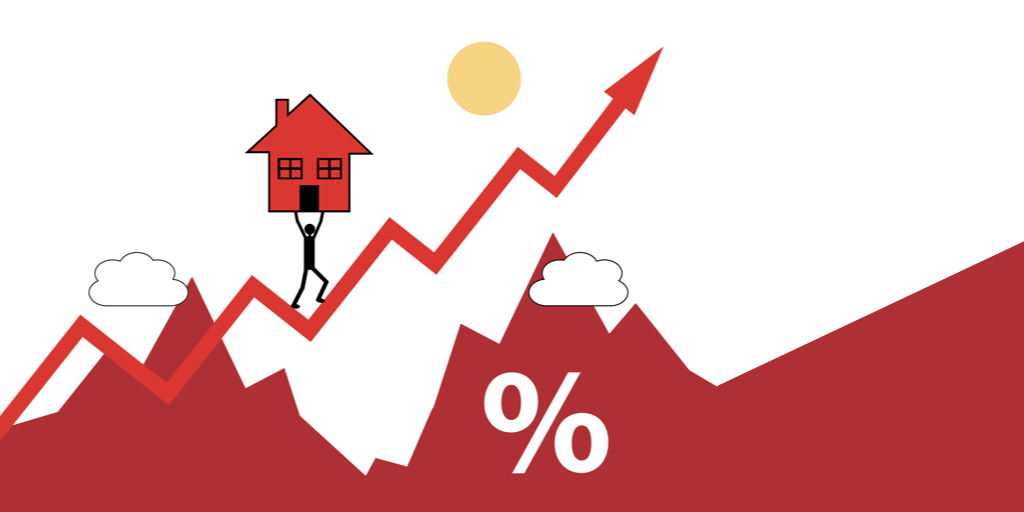The following is not for consumers, homeowners, or borrowers. It is intended for reverse mortgage professionals and is not intended to provide legal or financial advice.
Remember the infamous pick-a-pay loan? Perhaps we should have been calling them ‘pick-a-foreclosure’ loans. Back in the unbridled craziness that was the pre-2008 housing bubble homeowners could choose to pay a fully-amortized payment, interest-only, or negative amortization (underpay). A novel idea that was doomed to fail. Why? Those who paid less than an amortized payment saw a reset trigger when their loan reached 110% to 125% of the original balance. The siren song of optional mortgage payments is no less enticing today than it was 12 short years ago. Thankfully these poisonous exotic loans are extinct, however, one pick-a-payment loan remains hidden in the unnoticed corners of mortgage lending- the reverse mortgage.
It doesn’t take much reflection to recognize the vast majority of reverse mortgage borrowers took the loan to eliminate their required monthly principal & interest payments. However, that trend is slowly evolving with more seeking to have access to large sums of cash should they need it, and others choosing to make periodic payments. No one wants to admit they’re beside themself trying to figure how to make ends meet in retirement, but they’re more willing to act to avoid that dreaded fate.
In the post-COVID 19 world the choice-driven consumer will play an increasingly important role, particularly for the mass-affluent who are not driven by the pangs of need or desperation. People love to have choices- even if they will likely never exercise them. A quick visit to your nearest casino buffet serves as a tangible and tasty reminder.
So Adam and Rebecca just took a reverse mortgage last month which did in fact eliminate their former mortgage payments. Being fiscally conservative they decide they’ll pay what they used to on their former loan 9 months of the year. The other three remaining months they take a ‘payment vacation’. There’s no paperwork required, no loan modification agreement that must be approved by their bank, or begging of any sort. They’re in control. The skipped payments they use to partially fund their annual family vacation helping their children and grandchildren who otherwise would be unable to attend.
Patti decides upon the old pick-a-pay interest-only option. Her concern is leaving some equity for the kids. Only paying the interest still saves her a tidy sum each month that she used to pay with her conventional loan. Her equity-conservation strategy is a win-win scenario for her and her son Robert who is still building financial security. Unlike the poisonous pay-option loans of yesteryear, there are no surprise minimum payment hikes once the loan reaches a trigger threshold because there are no required payments.
“You can invent your own balloon payment and pay every three years. The reality is because there’s no due date you can never be late”, says Martin Andelman in his recent interview on HECMWorld. And, unlike your traditional mortgage one can recoup those payments should they need them for any reason without having to plead with the bank for a HELOC or a costly cash-out refinance. “If 35-year olds could get HECMs, it would be the only loan in the country”, added Andelman
So while we cannot market the Home Equity Conversion Mortgage (HECM) or any private reverse mortgage as a pick-a-pay loan, that’s precisely what it is- more accurately what it can be. A HELOC alternative, pick-a-pay, or 30-year mortgage? A reverse mortgage has the flexibility to be each when the homeowner says so.
We are much more than ‘mortgage-elimination’ specialists. We provide choices that may reduce risks for older homeowners. After all, isn’t nice to have options, even if you don’t need them?










9 Comments
Shannon, this is an EXCELLENT article. I never have in the past, but I’m going to start mentioning these options moving forward.
Owen
Interesting article. . Your example assumes that the payments being made are used to pay down the HECM balance. As I read that, the question that popped into my mind was “Why shouldn’t the borrower be able to use the payments to increase her credit line rather than decrease the balance?” The privilege would have to be limited, of course, perhaps requiring an updated appraisal, but it would be a great feature,
Jack Guttentag
Thank you for chiming in Jack. Good to hear from you. There’s been some debate on how repayments are replied and how they ultimately impact the growth of the principal limit (line of credit).
Jack,
Good to see you interacting with Shannon.
Any prepayments from borrowers have three impacts.
Fist is the lowering of the unpaid balance due on the HECM by the amount of the prepayment. To avoid loan termination, no prepayment should bring the unpaid balance due below the amount required by the lender to keep it active. Some say $50 but I prefer $500.
Second, prepayments will be applied to the accrued costs of a HECM in determining how much interest has been paid in the tax year of the borrower. Unlike many other loans, HECMs have a specific order that prepayments must be applied. That order is 1) unpaid accrued MIP, then 2) unpaid accrued service charges (if any), then 3) unpaid accrued interest. Any prepayment in excess of all three unpaid accrued costs is applied to principal.
Third, any prepayment must increase the available line of credit but not beyond the then current principal limit of the HECM.
While one servicer is notorious for its failure to increase the available line of credit by prepayments, that servicer is wrong. For some reason HUD has not entered into the fray, most likely due to few complaints and a lack of any lawsuit on this matter. The folks at Celink do it the right way. If you have any questions about this, please speak with Ryan LaRose at Celink. HousingWire Magazine named LaRose a “Rising Star.”
Besides the current principal limit, there are no other limitations on the available line of credit. There is another pragmatic limit that might come into play and that is no servicer or lender can pay out any amount that when added to the current unpaid balance due will exceed the Maximum Mortgage Amount (also know as the Maximum Principal Amount). The states govern the Maximum Mortgage Amount and in California the Maximum Mortgage Amount is 150% of the Maximum Claim Amount. The Maximum Claim Amount is the lower of 1) the appraised value of the home at closing or 2) the national lending limit, which is currently $765,600. So if the appraisal at closing was $600,000 under the current lending limit, the Maximum Mortgage Amount would be $900,000 in California.
Do you see changes in HECM Reverse Mortgage guidelines, especially in lending limits for 2021 as were announced in the fall of 2019 last year for 2020?
Tim,
For years, HUD failed to increase the lending limit according to calculations performed by Dan Hultquist at FAR.
HUD explains that the increase “is governed by the maximum claim amount limitation in sections 255(g) and 255(m) of the National Housing Act, which contains cross-references to section 305(a)(2) of the Federal Home Loan Mortgage Corporation Act (12 U.S.C. 1454(a)(2)) as further defined in 24 C.F.R. 206.3.”
HUD normally releases information on the HECM Nationwide Lending Limit in late fall. So we will learn what that limit will be about 20 weeks.
HUD has set out the guidelines of how payments on a HECM balance are applied. First it pays any accrued MIP, then any accrued Servicing Fees, then accrued interest, and then finally towards principal. Being that money is fungible, it still is paying down debt and if you used the HECM to buy a home then the interest could possibly be tax deductable. Since I joined the industry 22 years ago, I’ve been taught and have told others that every dollar paid on a balance is then added into the LOC, IF they have an adjustable rate HECM. Doesn’t apply when the HECM is a fixed rate. So the answer to Jack is that it does both, pays down the balance and also increases the line of credit. This has been part and parcel of a HECM for as long as I’ve been doing them.
Brien,
Great comment. It would also have been a better direct reply to Jack. As to each of your accrued categories, it would be better to use the word “unpaid” as a gerundive since it is only the unpaid portion that comes into play. I am glad to see you addressed the matter that the HECM must be an adjustable rate HECM. I believe that Jack knows that but it is great you added that since others who read this post may NOT.
There are other issues but you did a great job covering the basics.
In HECM land there is no such thing as an interest only payment. To pay off interest one must also pay the unpaid accrued MIP and the unpaid accrued service fees (if any). While with proprietary reverse mortgages it is possible to make interest only payments. Why anyone would make interest only payments is not a good tax planning technique unless the interest is substantially deductible as qualified residence interest as an itemized deduction and the total of the all itemized deductions substantially exceed the Standard Deduction each and every tax year. In most cases, bunching several years’ itemized deductions into one tax year is far more effective.
Tracing the use of reverse mortgage proceeds could be an effective exercise in determining if the reverse mortgage interest can be deducted as business activity, flow through activity, passive activity, residential rental activity, investment interest, or other category of deductible interest. If the interest can be deducted in another category other than qualified residence interest, in specific situations, the interest can be deductible as accrued.
Yet as to the deduction of reverse mortgage interest, the best advice that a reverse mortgage originator can give a borrower is to seek the advice of a tax advisor who is competent in the interest deduction for tax purposes and reverse mortgages. There are few tax advisors who are. The rules are difficult and explaining them should be left up to those who are competent and experienced in such matters.